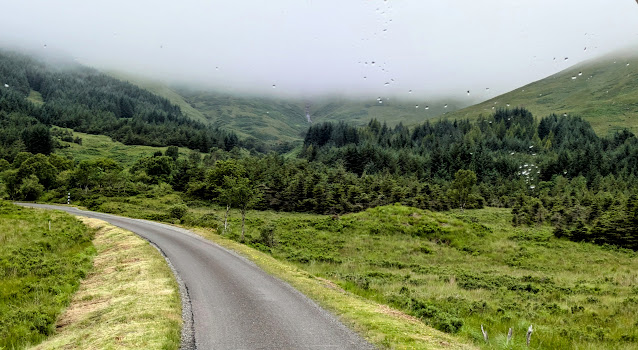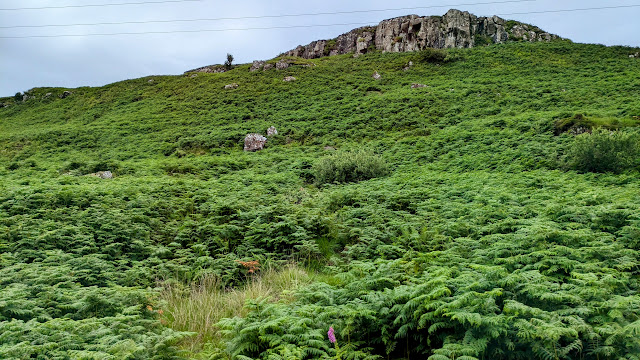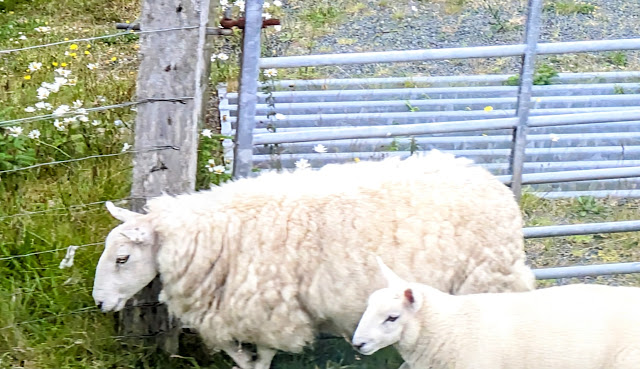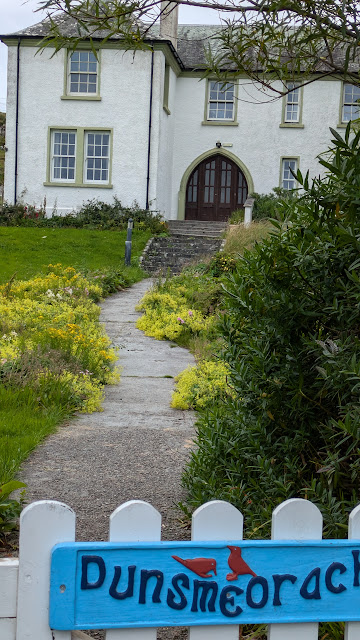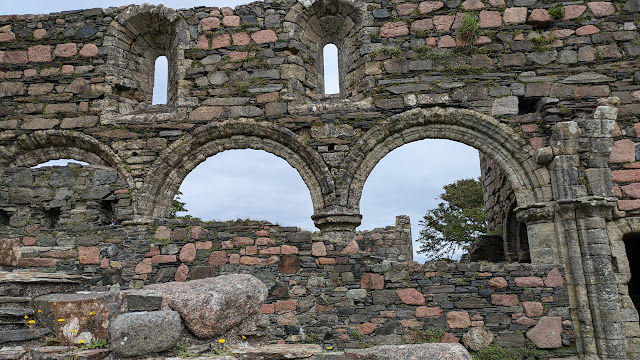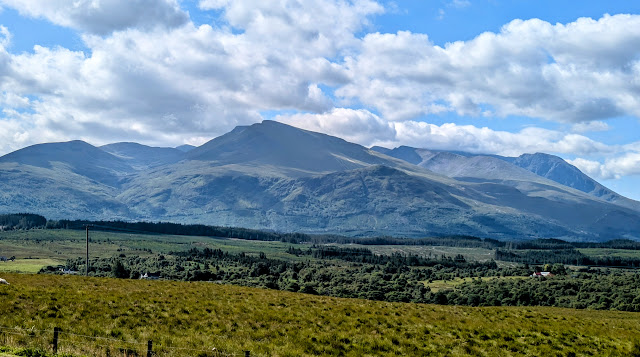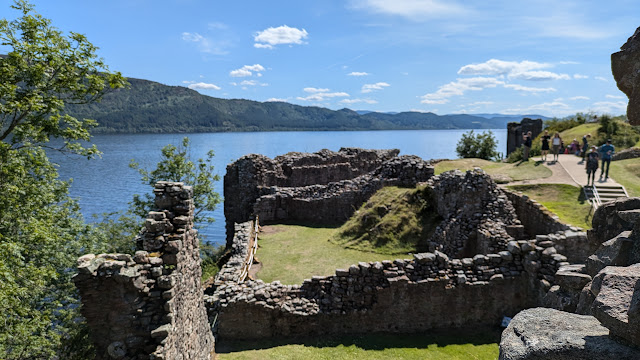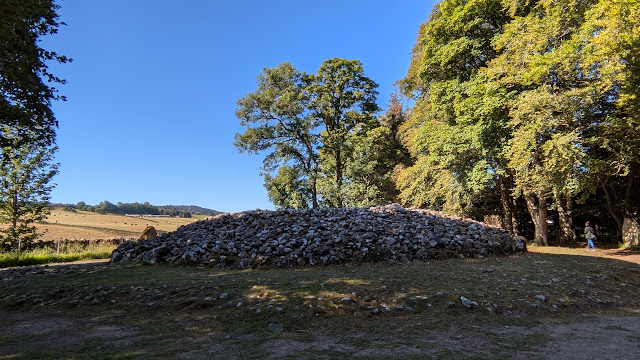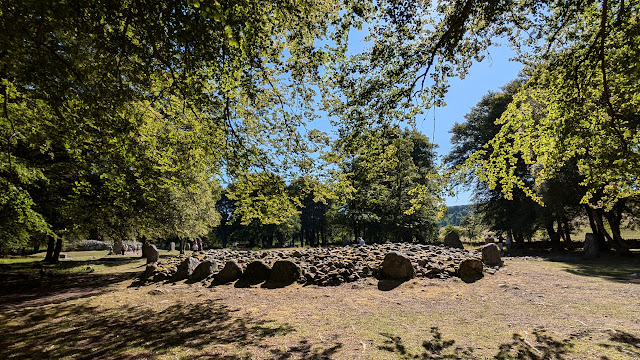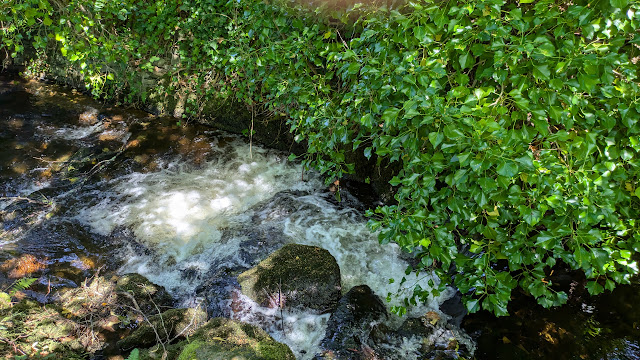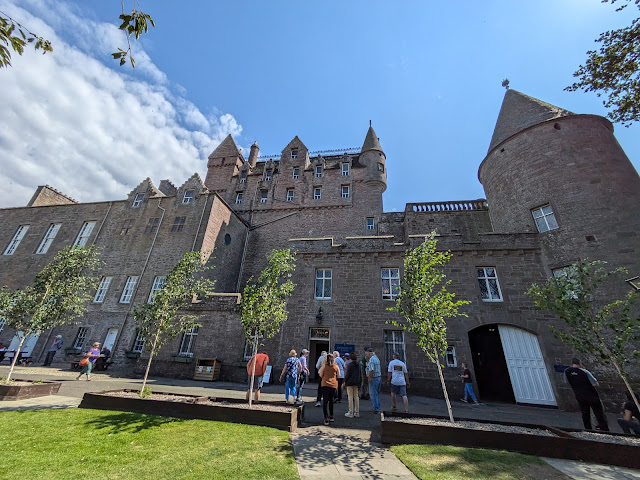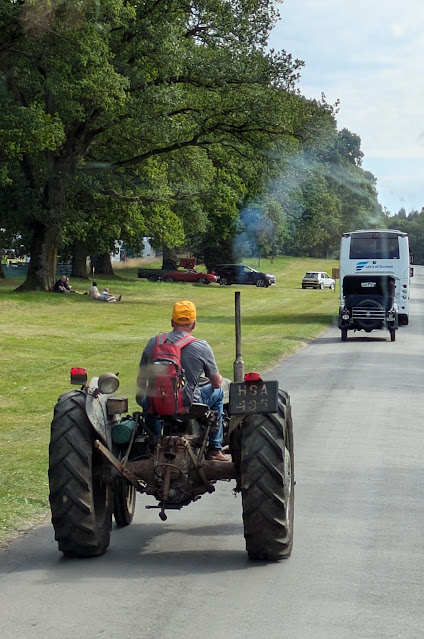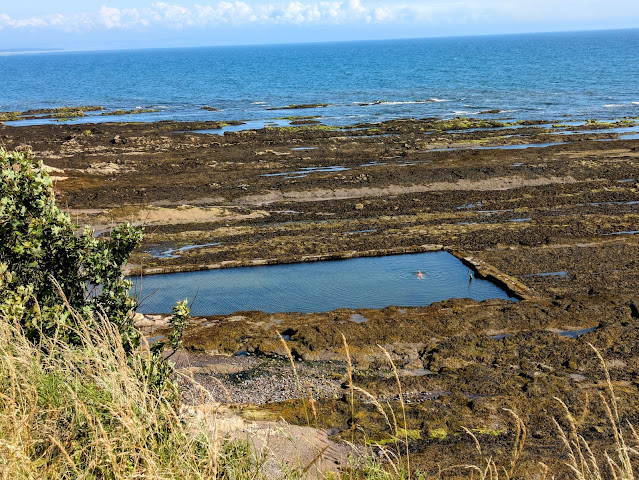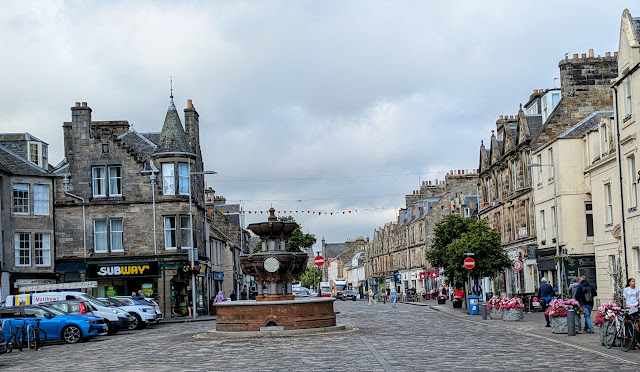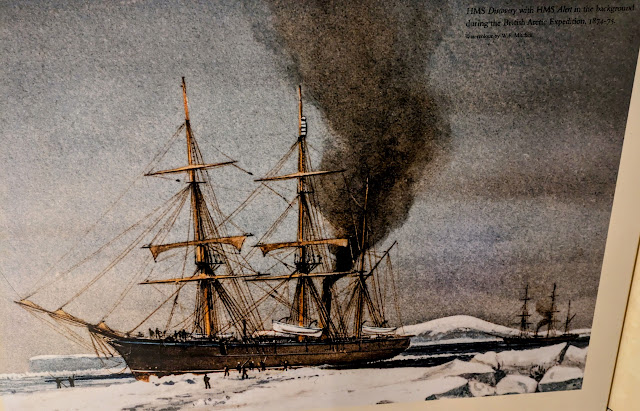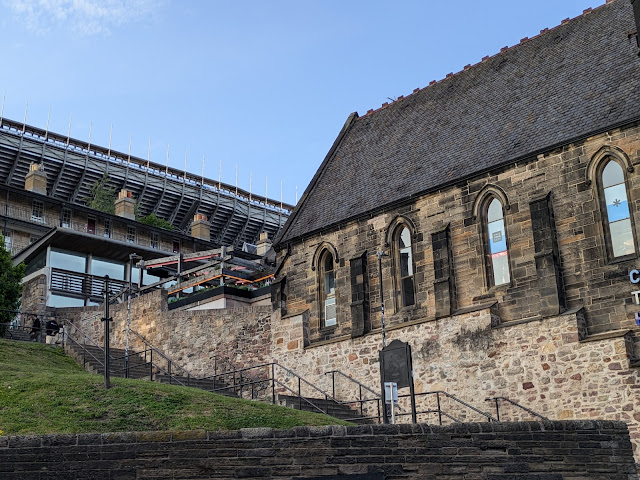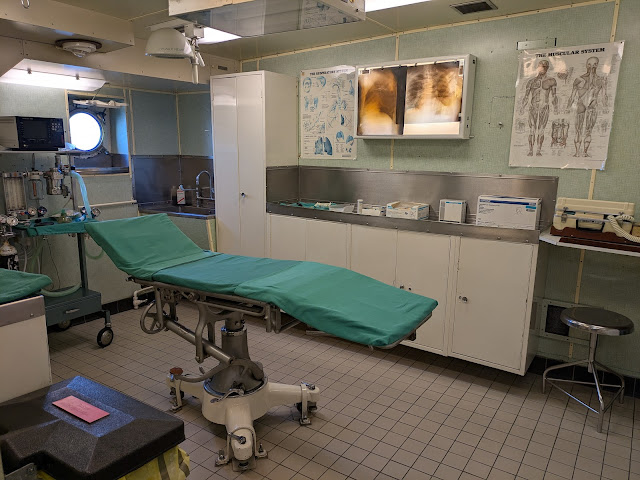Scotland Overseas Adventure, Part III: Oban to Edinburgh
July 10 we took the Caledonian MacBrayne (CalMac) ferry from Oban to the Isle of Mull and met our driver Richard who drove us to Fionnphort where we caught a smaller ferry to the Isle of Iona, had sandwiches and scones before meeting our local guide Jana (longtime residents of German origin).
Breath-taking scenery! On Mull there are 10,000 deer and 3200 people
Here St. Columba of Ireland in the sixth century traveled to this small Scottish island to spread Christianity. He built a Celtic church, Iona Abbey, where the famous Book of Kells is believed to have been written. Over the centuries the church was repeatedly raided by Vikings, destroyed and rebuilt, finished in the 12th century, and then abandoned during the Scottish Reformation.
Home of the Macleods, founders of the Iona community
On the way back by ferry, bus, and ferry from Iona we stopped for photos, listened to poetry and songs. So beautiful!
 July 11 we left Oban and headed up the Great Glen following the route of Thomas Telford's Caledonian (Roman name for Scotland, though Romans never conquered Scotland) Canal (finished in 1852) which links the great lochs (Lochy, Oich, and Ness). We had a short stop in Fort William where we saw the old Jacobite steam train (or Hogwart's Express in Harry Potter films)
July 11 we left Oban and headed up the Great Glen following the route of Thomas Telford's Caledonian (Roman name for Scotland, though Romans never conquered Scotland) Canal (finished in 1852) which links the great lochs (Lochy, Oich, and Ness). We had a short stop in Fort William where we saw the old Jacobite steam train (or Hogwart's Express in Harry Potter films)We visited the ruined Urquhart Castle on the shores of Loch Ness
Our visit to the museum was interrupted by a fire alarm (false alarm!) We arrived at our hotel in beautiful Inverness (=mouth of the Ness River) before dinner at the Mustard Seed and afterwards loved the music at the Highlander Bar.
Inverness City Hall
We then headed to Culloden Battlefield, site of the last (and very short) pitched battle on British soil at the end of the final Jacobite (those who wanted to restore the House of Stuart) uprising on April 16, 1746, where Bonnie Prince Charlie, against the advice of his leading commanders, insisted on fighting against better armed and prepared British government troops under Duke of Cumberland, was quickly defeated, with 1500 dead. Great visitors center!
Lunch back in Inverness at Victorian Market, visit to Leakey famous used bookstore, Old High Church behind where St. Columba preached Christianity to the Picts (original inhabitants of Scotland).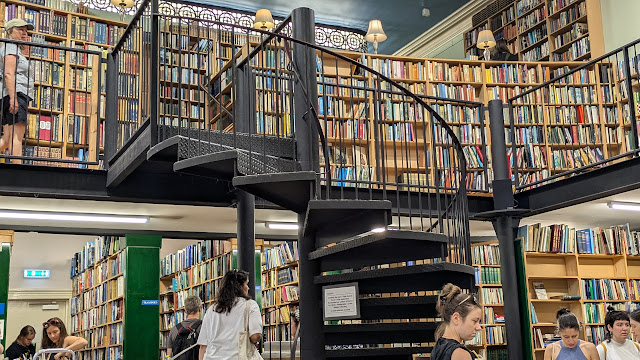
Valerie, Karen and I walked a long ways along the River Ness to the annual Highland Games and watched the dancing, shot-put, and weight throwing over a bar competitions, listened to the famed and wonderful MacGregor multi-instrument Ceilidh band, then walked back to shop and meet the group for dinner in town at the Aye Eat.
 and met a very gregarious little boy Noah who was impressed to meet so many Americans!
and met a very gregarious little boy Noah who was impressed to meet so many Americans! In the town of Birnam we took a walk with local guide Nicky along the longest river in Scotland, the Tay.
In the town of Birnam we took a walk with local guide Nicky along the longest river in Scotland, the Tay.We passed the famous 600 year old Birnam Oak as featured in Shakespeare's Macbeth: "Macbeth shall never vanquished be until Great Birnam Wood to high Dunsinane hill shall come against him." In Shakespeare's Macbeth, Birnam Wood's movement to Dunsinane is a crucial element of the play's climax and a fulfillment of witches' prophecy. It signifies Macbeth's downfall, as the advancing army uses branches from the forest to disguise their advance, making it appear as though the wood is moving. This event shatters Macbeth's false sense of security and pride derived from his misinterpretation of the prophecy.

We had lunch in the beautiful village of Dunkeld, where I visited the cathedral

After lunch we drove to Glamis Castle in Angus. It dates back to the 14th century as a royal hunting lodge. It is steeped in folklore, including associations with Macbeth (who is the Duke of Glamis in the beginning) and tales of ghosts, and where the Queen Mother spent most of her childhood. She never expected her husband Edward to be King after her brother was killed serving in the Black Watch.
There was a large vintage car show, so the castle grounds were mobbed. And we got stuck behind tractors, old cars, etc.

July 14th we drove to the seaside town of St. Andrews, 30 miles northeast of Edinburgh in the Kingdom of Fife, and is the home of golf (1500's) and a world class university, and the birthplace of the Scottish Reformation under John Knox in the 16th century.
There is a natural cold swimming pool that some brave souls use
We ate lunch in town after playing golf on the St. Andrews Old Course putting green. I was pleased to be where my grandfather had played serious golf. Karen, Nancy, Valerie and I played a friendly 18 holes.


Fascinating story! I can't imagine being stuck in ice for 2-3 years!
Nadia Maged El-Nakla is a Scottish psychotherapist, political activist and politician. She was elected as a councilor on Dundee City Council since 2022, representing the West End of Dundee. She is a member of the Scottish National Party. I read her fascinating autobiography.
In Edinburgh we have dinner on the Royal Mile opposite the St. Giles Cathedral (Church of Scotland so not really a cathedral)
The palace adjoins Holyrood Abbey and the gardens are set within Hoyrood Park. The King's Gallery was converted from existing buildings at the western entrance to the palace and was opened in 2002 to exhibit works of art from the Royal Collection
King Charles III spends one week in residence at Holyrood at the beginning of summer, where he carries out a range of official engagements and ceremonies. The 16th-century historic apartments of Mary Queen of Scots and the State Apartments, used for official and state entertaining, are open to the public throughout the year, except when members of the Royal family are in residence. The palace also serves as the official residence of the Lord High Commissioner to the General Assembly of the Church of Scotland during the annual meeting of the General Assembly.
Across the Street is the Scottish Parliament, a very modern building.Construction of the building commenced in June 1999, and the members of the Scottish Parliament held their first debate in the new building on 7 September 2004.
Other buildings along the Royal Mile (castle to palace)
Edinburgh is a very vibrant, tourist-filled city, with so much to see!
 Edinburgh Castle stands on Castle Rock, which has been occupied by humans since at least the Iron Age. There has been a royal castle on the rock since the reign of Malcolm III in the 11th century, and the castle continued to be a royal residence until 1633.
Edinburgh Castle stands on Castle Rock, which has been occupied by humans since at least the Iron Age. There has been a royal castle on the rock since the reign of Malcolm III in the 11th century, and the castle continued to be a royal residence until 1633.Until his death in 1872, faithful Greyfriars Bobby visited the grave of his master in Greyfriars Cemetery every day for 14 years.
The Last Drop pub is located on Grassmarket which is one of Edinburgh's main market squares, formed under the 1477 ordinance of King James III. Used as a gathering point for market traders and cattle drovers, the Grassmarket was traditionally a place of taverns, hostel and temporary lodgings. The market closed in 1911. Around 1660 it became a noted place for public executions, hangings on an almost daily basis until February 4, 1784, the last person to be hanged was James Andrews, a robber. The last drop is said to refer to the last drink a prisoner was allowed before his hanging, but also refers to his last drop through the scaffold trapdoor! There were also witch hunts, and persecutions of those who refuse to adhere to the new religion.
The Edinburgh Arts Festival, held since 1947 is approaching in August, so bleachers are being set up next to the castle and elsewhere.
Royal dining room above, the queen's office, surgery, infirmary, below
I guess I won't be able to sail, but am grateful for all the other transports that have allowed me to discover wonderful Scotland!
Charles-Emil Jacque's Leaving the Stall
Wandering Shadows, by Peter Graham (beautiful Scottish Highlands)
illustrations of Shakespeare plays
Saint Agnes by David Gould
John Duncan's Saint Bride, "foster mother of Jesus" being carried from Iona to witness the birth of Christ.
Sir William Allan Murder of David Rizzio (1833). The assassination of Italian musician and private secretary to Mary Queen of Scots as she looks on, restrained by her jealous husband Lord Darnley, implicated in the plot in Holyrood Palace.



